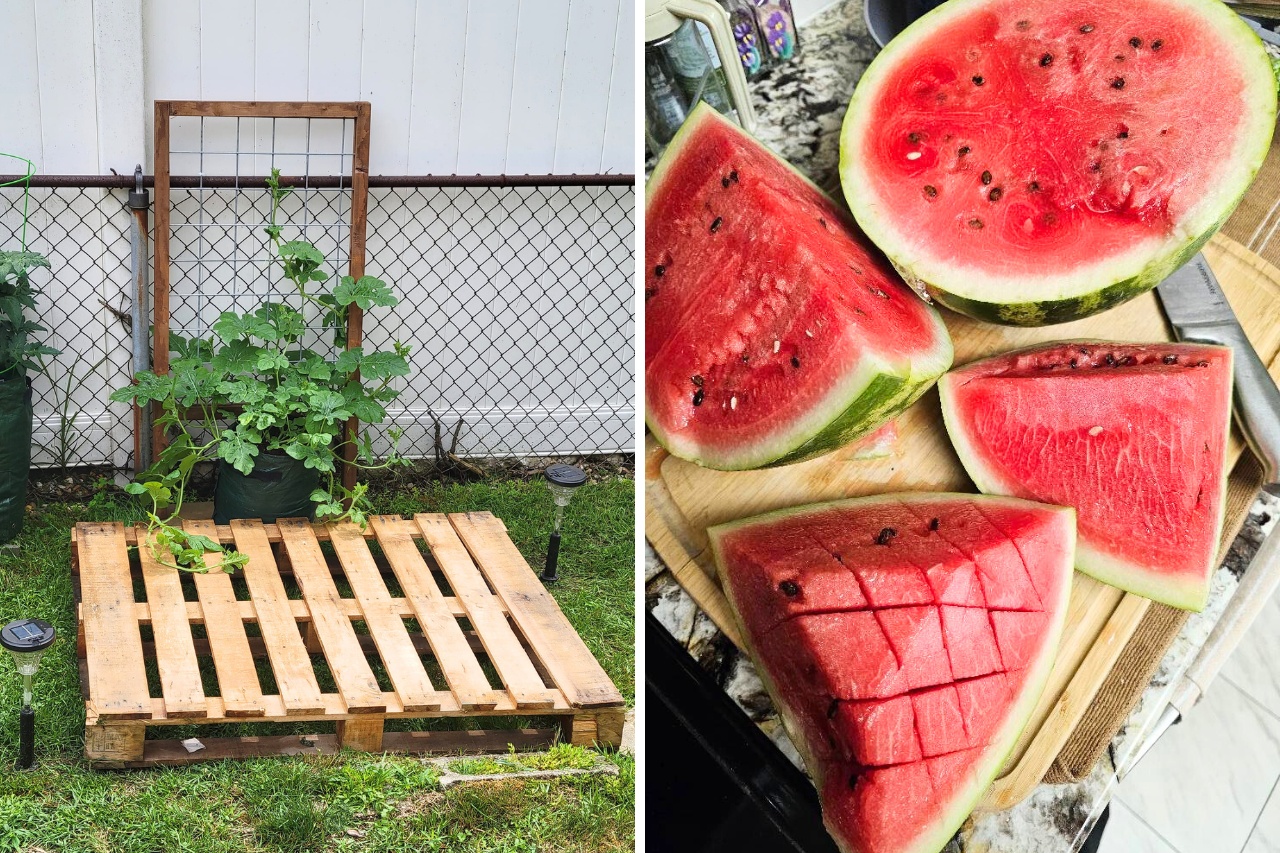Watermelon is one of my favorite summer fruits, but it is also among the least planted fruits in home gardens.
Most people think it’s a type of fruit that is difficult to grow and needs a lot of space.
This is true to some extent, but the good news is you can save space and still grow sweet, juicy watermelons by using wooden pallets as a DIY trellis.
This method keeps the vines upright, improves airflow, and lifts the fruits off the ground.
I’ve tried it and I can guarantee that it drastically reduces the possibility of rot or pests and gives you a nice harvest even in a modest backyard.
Let’s see how to do it, I assure you it’s not too complicated.
Why Use Pallets for Watermelon Gardening

I first saw this pallet technique on Facebook a few years ago, and I was so intrigued that I had to give it a try.
The idea behind it is quite simple: using a pallet as a vertical growing rack for watermelons turns a traditionally space-hungry plant into an ordinary garden plant.
Consider that, in general, watermelon vines can sprawl far. One plant can occupy up to 24 square feet if left to roam on the ground.
By training them up a pallet, you dramatically reduce that space, so it’s a perfect technique for small gardens.
Additionally, vertical growing provides better airflow around the foliage and fruit, keeping leaves dry and healthy.
And as you probably already know, if you’re not a total beginner, good air circulation helps prevent fungal diseases like powdery mildew.
Lastly, using repurposed wooden pallets is also eco-friendly because you’re giving new life to old materials, and it’s also budget-friendly.
Selecting the Right Watermelon Variety
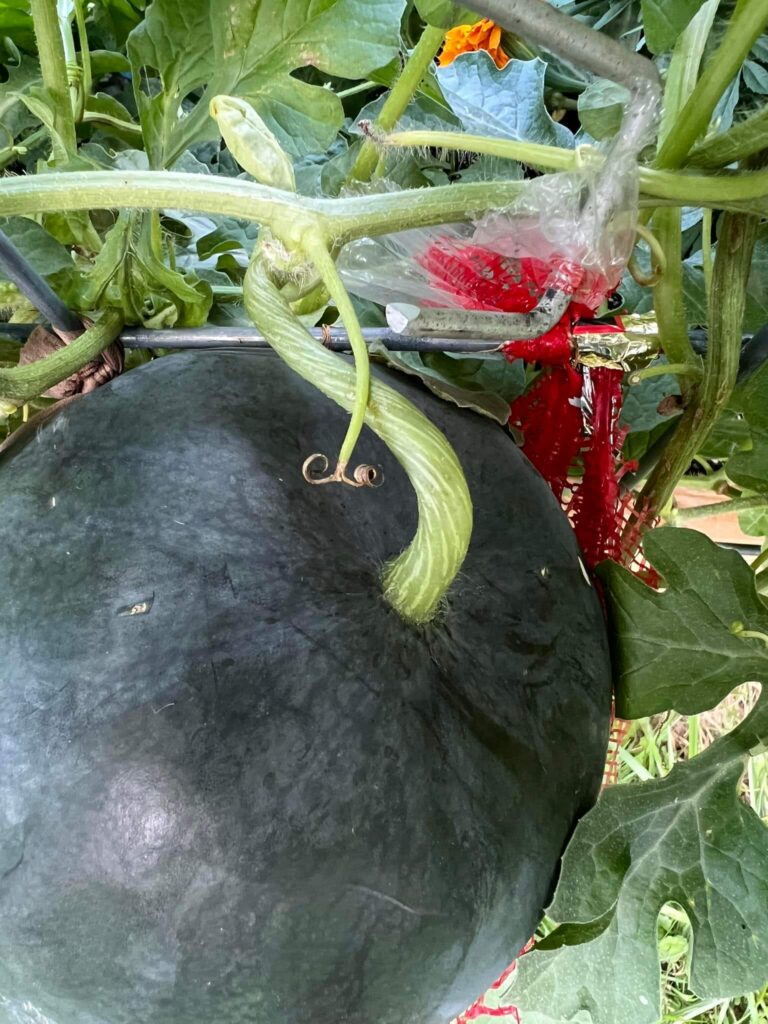
Choosing a suitable watermelon variety is key to success, especially for vertical growing.
The ideal would be to pick “icebox” or small to medium varieties that typically produce fruits under about 15 pounds.
In my opinion, the smaller varieties have two huge pros for home gardens. They fit better on a pallet trellis but also mature faster.
Consider that watermelons need a long, warm growing season. Many standard varieties take around 80–95 days to ripen, which is fine in warm areas (zones 7-10) but is not ideal for cooler zones.
So if you live in a northern region (zones 3-6), you are almost forced to choose smaller varieties that mature in under 90 days. Otherwise, you will have watermelons that are not very sweet and juicy. ù
On the contrary, in the South or areas with very hot, long summers, you have the luxury of choosing larger or longer-season melons if you wish (just be sure your trellis can handle them).
Below is a table of recommended watermelon varieties well-suited for U.S. home gardens and pallet growing. These choices offer a range of sizes, flavors, and maturation times to fit different needs:
In particular, I’ll recommend one between Sugar Baby, Blacktail Mountain, or Golden Midget. All three varieties will ripen in about 70 days.

Growing Watermelons with a Pallet Trellis
Select a sturdy wooden pallet in good condition (no broken slats) and ensure it’s safe for garden use.
You should avoid pallets stamped “MB”. It means methyl bromide, so they were chemically treated.
The ideal would be to find one marked “HT” which means only heat-treated.
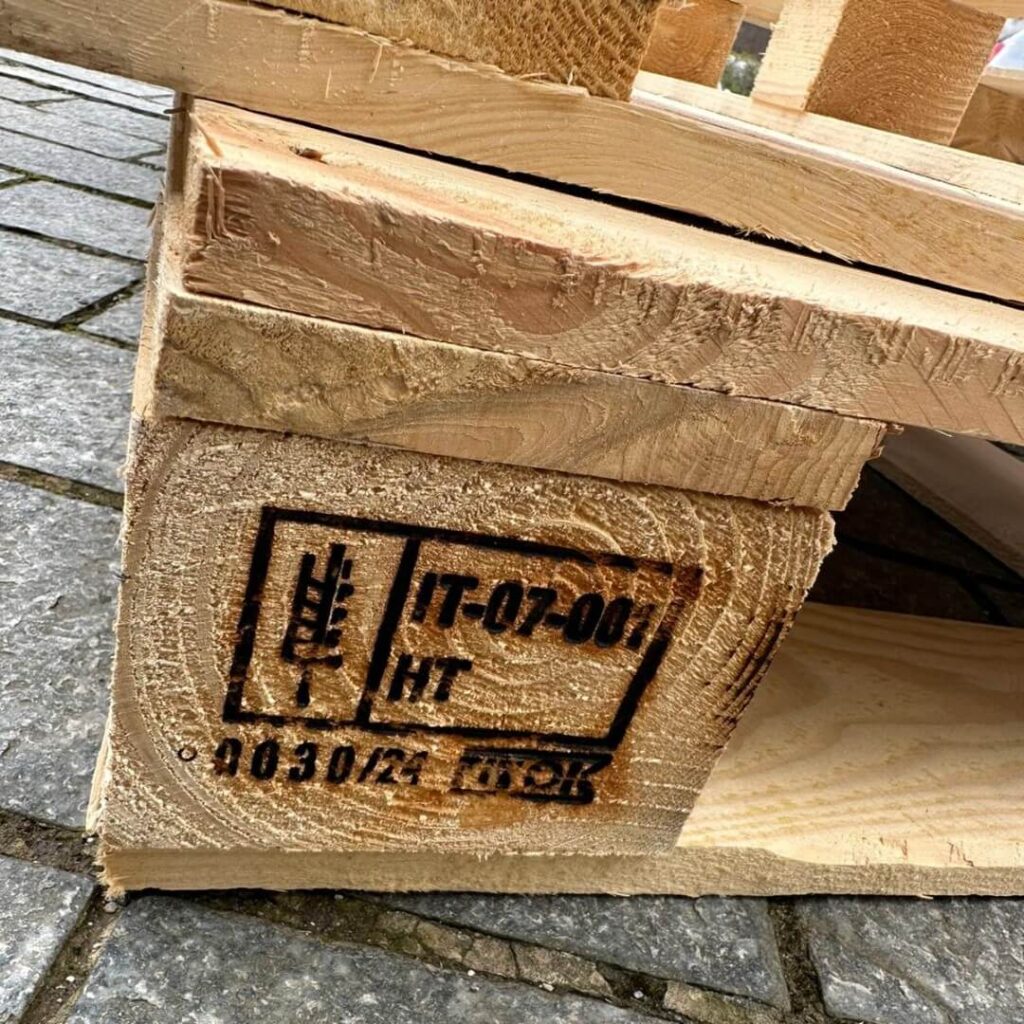
As I said before, the pallet will act as your trellis. Place it in a full-sun location that gets at least 8 hours of sunlight daily. It’s essential to get sweet fruits.
Some people say you can have two watermelon plants per pellet. I recommend sticking with one, especially if it’s your first time.
Watermelons will get heavy, so your pallet trellis must be stable. There are a couple of ways to set it up.
Stand the pallet upright at the end of a raised bed or in the garden, and anchor it with stakes. Hammer 2×2 wooden stakes or metal T-posts into the ground just inside the pallet frame on each side, then screw or tie the pallet to these stakes.
This prevents it from tipping. If against a fence or wall, you can also secure the pallet to that structure with heavy-duty zip ties or wire.
If you have two pallets, you can hinge them at the top to form an “A” shape and lean them together.
The A-frame shape is very stable and provides a good climbing surface on both sides.
PRO GARDENER: If you use the A shape, you could grow melons on one side and cucumbers or squash on the other.
Prepare the Soil and Plant the Watermelon
Always remember that watermelons are heavy feeders and need rich, well-draining soil.
Before planting, loosen the soil at the base of the pallet and work in plenty of organic matter.
To plant, wait that the soil has warmed to at least 65–70 °F (18–21 °C). Watermelon seeds won’t germinate well in cool soil, and young plants can be stunted by cold.
You can start seeds indoors a few weeks early in peat pots if you want a head start, but be careful when transplanting because watermelons have sensitive roots. Do it only if you know what you are doing.
If you use direct seeds, plant 2–3 seeds about 1 inch deep in a small mound of soil about 6 inches from the base of the pallet.
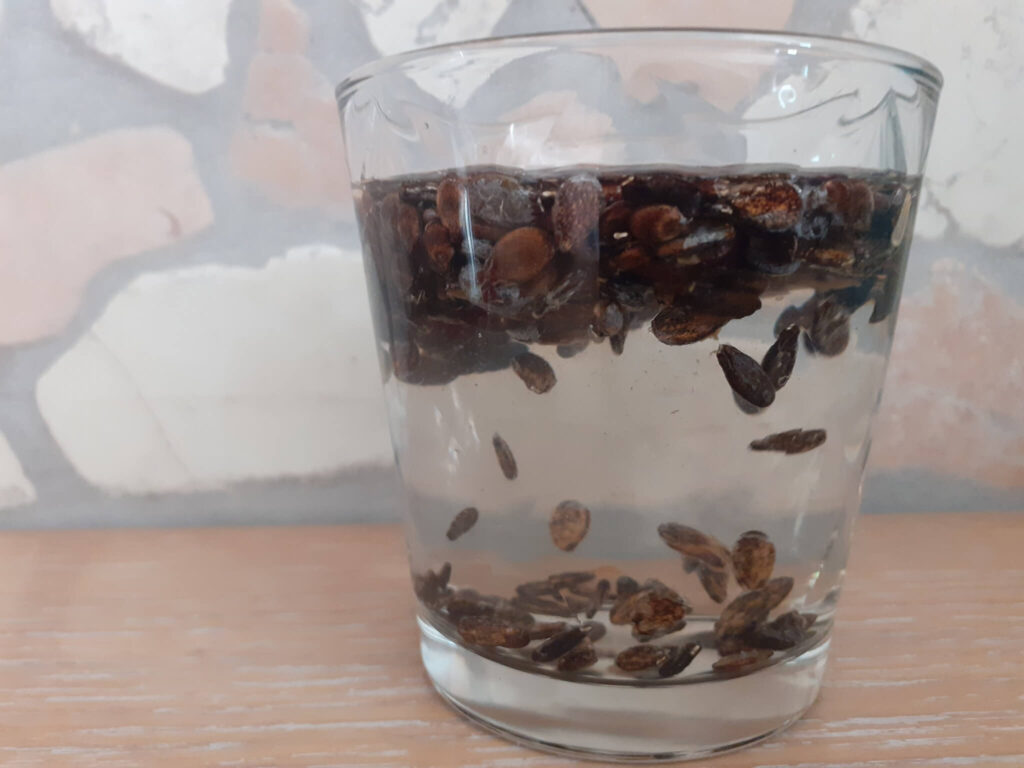
Once seedlings emerge, keep the strongest one. As your watermelon vine starts to grow, you’ll need to guide it onto its wooden “ladder.”
Consider the plant will naturally put out curly tendrils that grab anything they touch, and they do really well having something to grow onto instead of just spreading out on the ground.
When the vine is about 1–2 feet long, gently lift it and set it on the pallet, weaving it through the slats if possible.
You can loosely tie the vine to the pallet slats using soft plant ties or strips of cloth to give it a head start climbing. Just pay attention not to tie it too tightly, leave some slack for the vine to grow thicker.
PRO TIP: Always keep an eye on the plant while it’s growing. If you find sections of vine flopping off or not climbing just tuck or tie them back in.
Water and Feed Regularly
Not long ago, I received a message from a reader saying that the plant had grown well, but the watermelons were not very good.
Well, that’s probably because you need consistent care to get the sweetest watermelons.
The first thing to keep in mind is that these plants love water (after all, a ripe watermelon is over 90% water by weight), but they don’t like to sit in mud.
Aim to keep the soil evenly moist to about 6 inches deep throughout the season. A good rule is to provide roughly 1–2 inches of water per week during the growing season, and maybe even more during the peak of summer heat.
As usual, keep the leaves dry to minimize fungal issues (wet leaves in the hot sun can invite mildew or other diseases and if you can prefer early morning watering.
Watermelons are also heavy feeders, so they will appreciate some fertilizing. When you prepare the soil, add compost or a balanced granular fertilizer. Those nutrients will get the vine off to a good start.
Once the plant is established and begins growing vigorously, you can feed it with fertilizer to boost growth.
Once the plant starts flowering and fruiting, switch to a fertilizer higher in phosphorus and potassium to support blossom development and sweet fruit.
Monitor and Maintain
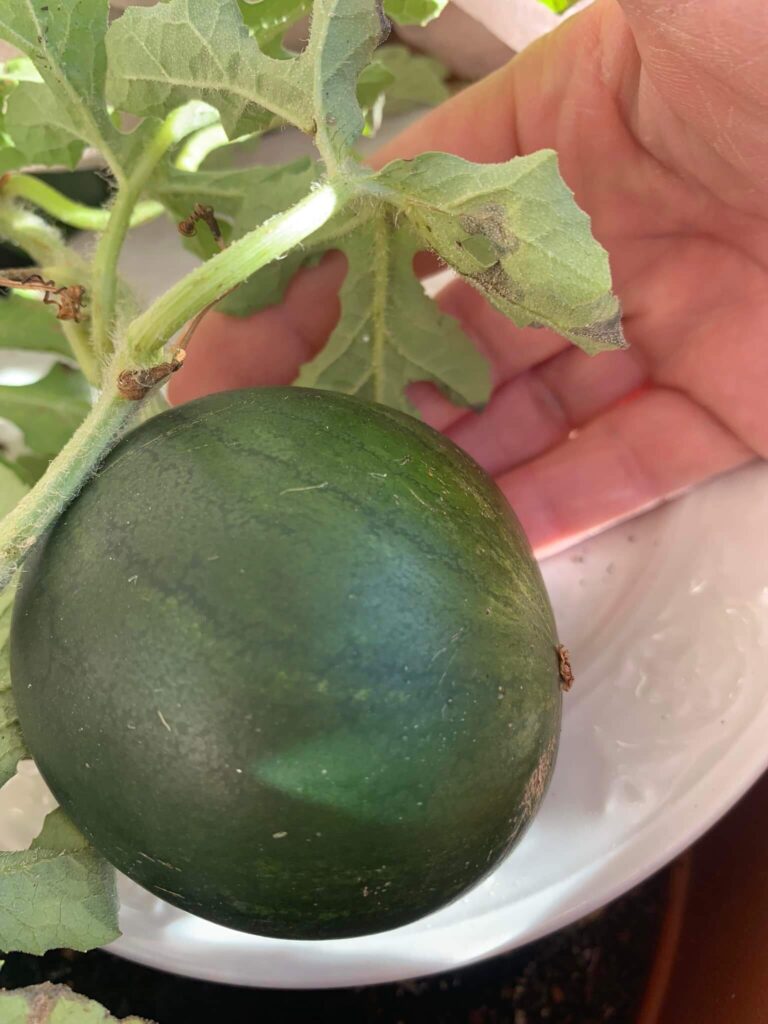
That’s basically it. After about 70 days, you’ll have your beautiful homegrown watermelons.
You just have to keep an eye on your watermelon plants and trellis. Prune the plant if necessary, especially if there are too many side shoots, and take care of it as you do with other plants.
And of course, avoid the most common mistakes that all gardeners make because they can ruin the whole job.
ADDITIONAL TIP: The Best Time to Harvest Them
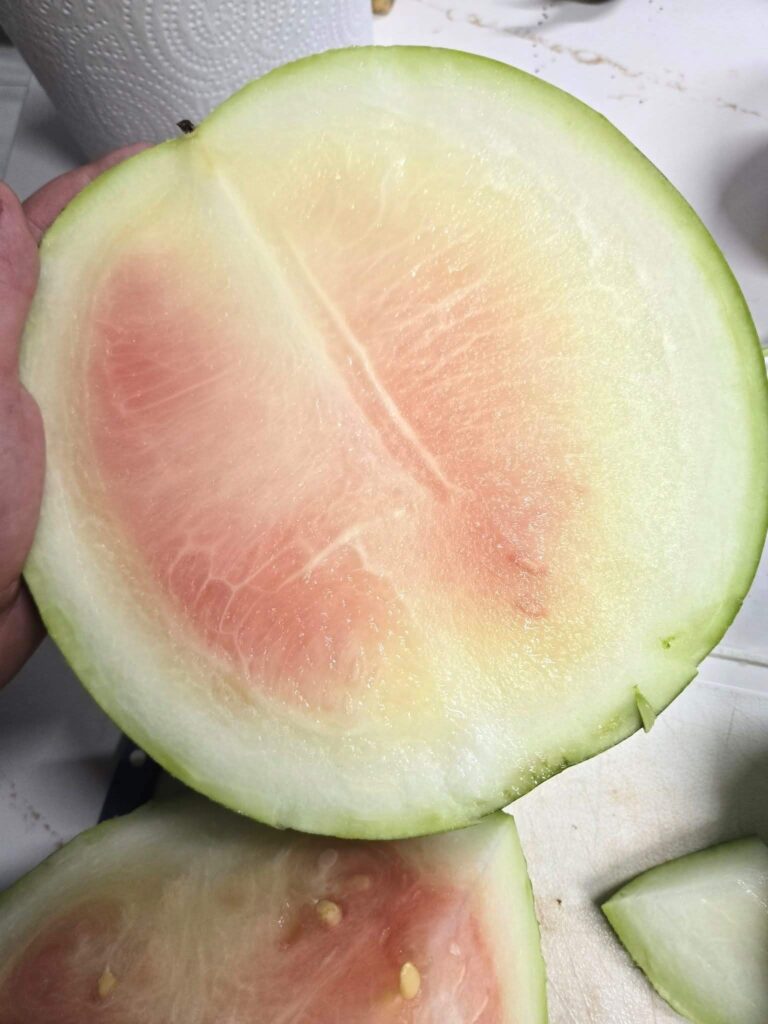
I am adding this last part because I have noticed that many people have a hard time figuring out when is the right time to harvest watermelons.
Forget about those who say to hear the sound it makes because it is very difficult to understand from that, especially for the non-expert.
I assure you that the best method is to watch the curly tendril closest to where the fruit stem attaches to the vine. When it turns brown, dry, and crispy, your melon is likely ripe.
Beware because a mistake I often see is to think that the watermelon will continue to ripen once it is picked. This is simply incorrect.
Watermelons don’t keep ripening after they’re picked, so make sure to harvest them only when they’re fully ripe!

